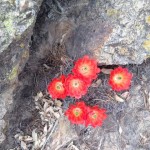
It is easy to acknowledge our current state in UNESCO’s international Man and the Biosphere (MAB) program, but neglect to see how we got to this point. As one of the innovators in large landscape conservation, biosphere reserves paved the path for many future landscape-scale efforts over the past several decades. Yet, most people in the United States are unfamiliar with the term, biosphere reserve, or assume the program has dissolved because of its long period of inactivity. While many countries’ biosphere programs have grown around the world, the United States’ relationship with the MAB program has been quite tumultuous. Serving as a role model in the international program in the 80s and 90s, the U.S. program’s reputation was quickly transformed by the skepticism of a few vocal groups worried about land sovereignty and any program associated with the United Nations among other challenges. While this contributed to the downfall of the U.S. program, it is important to look at the evolution of the program instead of just a snapshot in time. For example, there were many factors that contributed and inhibited the success of the program at the beginning and these differed from challenges faced decades later.

While the biosphere program now coexists among many newer large landscape initiatives, their significance continues to serve as a foundation for other efforts. The long history and evolution of the biosphere reserve program can offer lessons learned for many of these new initiatives such as identifying obstacles to anticipate and offering strategies to overcome these governance challenges. In addition, biosphere reserves’ long history has created an invaluable network of relationships that have strengthened over the past several decades, which serve as a key benefit for newly emerging collaborative efforts.
In a recent attempt to revive the U.S. biosphere reserve program over the past year, there is a renewed enthusiasm for the U.S. to reengage with the international network. However, with a decade of inactivity the U.S. has a long road ahead to rebuild the image of the biosphere reserve concept and gain the necessary support at the local, regional, and national levels. Some of the recent activities have included reestablishing the U.S. National MAB Committee, individual units submitting reviews to UNESCO to maintain their biosphere reserve designation, and engaging in international meetings with MAB constituents. Additionally, Biosphere Associates has emerged as an organization this past spring as a forum for professionals to collaborate on biosphere reserve efforts. Some of these efforts include creating an information-sharing platform, gaining a better understanding of the needs and perceptions of the individual biosphere reserve units, strengthening international partnerships, and supporting the efforts of the National Committee.
It is through these voluntary efforts and support that maintains the momentum for the U.S. to once again become an active participant in the international MAB network. For the program to reach its full potential, the U.S. program needs to learn from its history and also from other large landscape conservation efforts. Quoting from George Santayana, “Those who cannot remember the past are condemned to repeat it.” For the success of the U.S. biosphere reserve program and new large landscape initiatives, let us learn from the past to anticipate and actively respond to challenges in order to create a more resilient future.
The author Jennifer Thomsen is an Assistant Professor in the Department of Society and Conservation at the University of Montana. She has done research that involved biosphere reserve units in the U.S., serves on the U.S. National MAB Committee, and is leading the working groups in Biosphere Associates. Her research interests focus on large landscape conservation and stakeholder collaboration. To get involved in biosphere reserve efforts or if you have any questions, contact Jennifer at jennifer.thomsen@umontana.



One Response
This is a timely and excellent article by Ms Thomsen on Biosphere Reserves. The USA does need to re-engage with the world community.
Well done Jennifer!